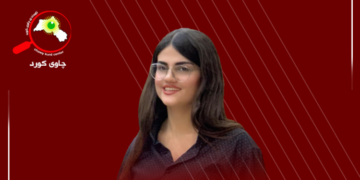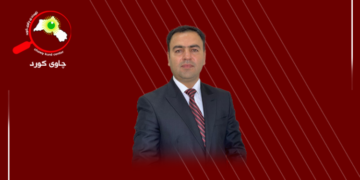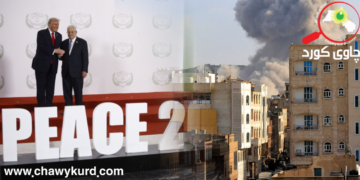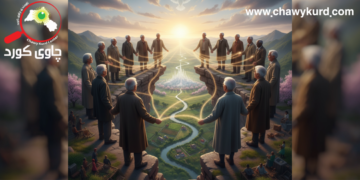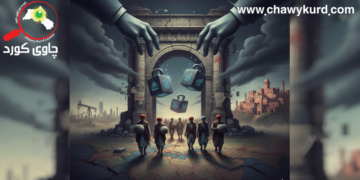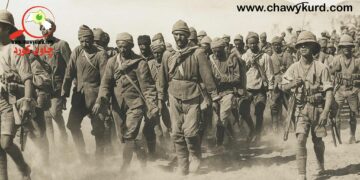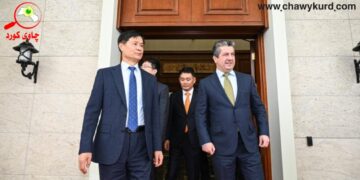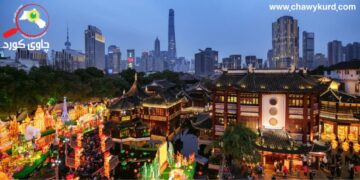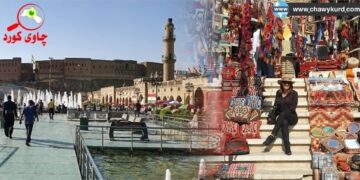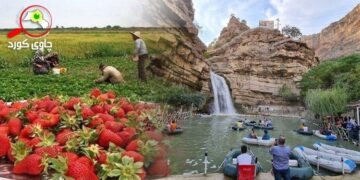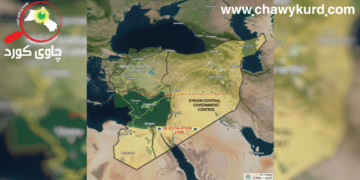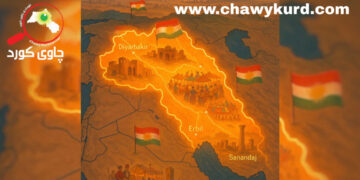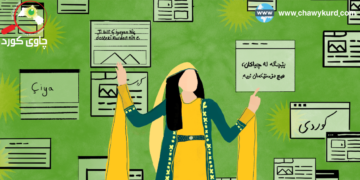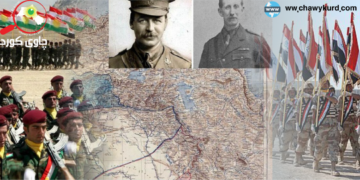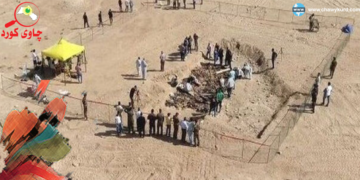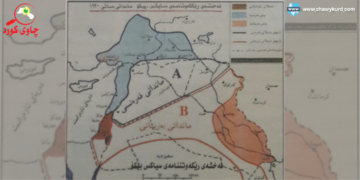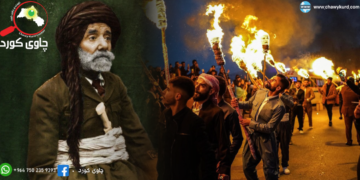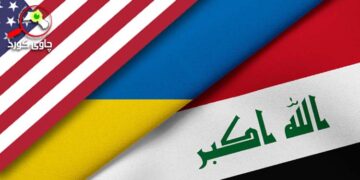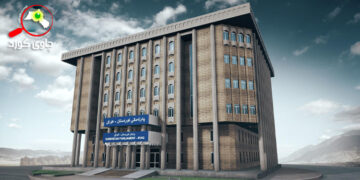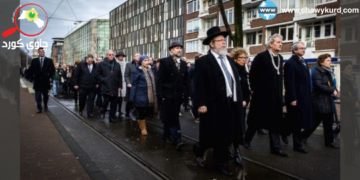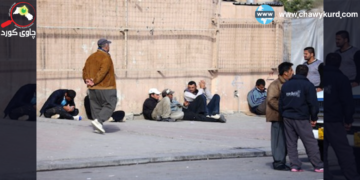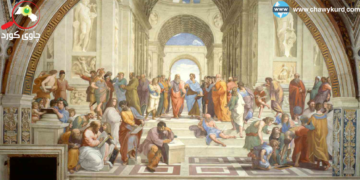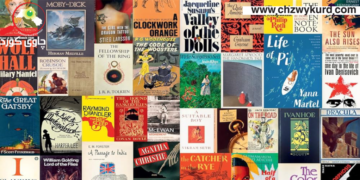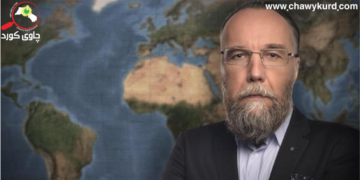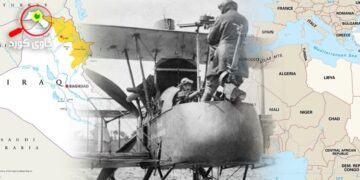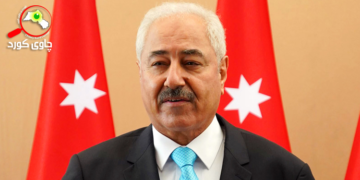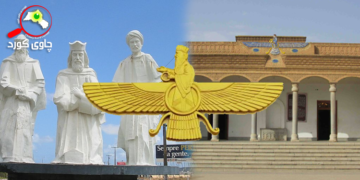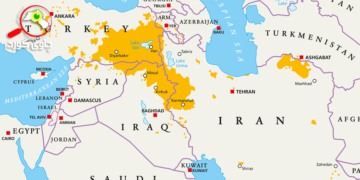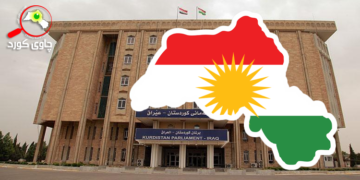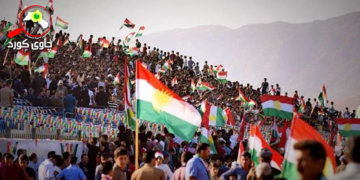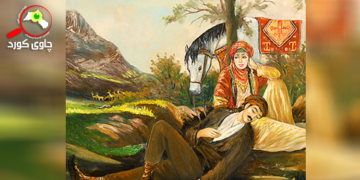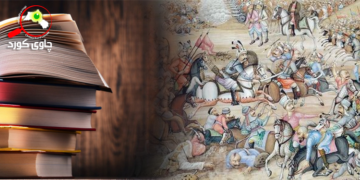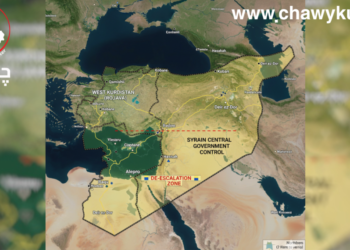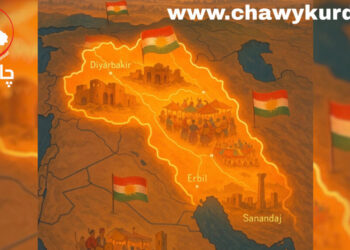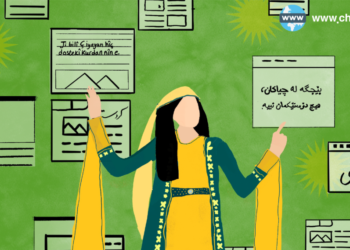NuRoj, as is pronounced in parts of Kurdistan, and Newroz, or other variations of it, as it is known in Iran, Iraq, Syria, Afghanistan, Tajikistan and other parts of the Middle East and other Central Asian countries, is just around the corner, arriving yearly on the vernal equinox, which occurs precisely on March 20 ±1 day.
The year is now 2021, and this year it occurs on Saturday, March 20, at 9:37:31 a.m. UTC (Coordinated Universal Time) and 1:07:31 pm, in the Kurdish City of Kermanshah time zone, and locally her in Los Angeles, at 2:37:31 p.m. This occurs when Earth completes its annual journey around the Sun from a reference point in space called Equinox, and returning back to the same point one year later while it rotates around its own tiled axis in ration to the Sun’s axis.
There are four spatial points of reference around the sun, called, 1) Vernal Equinox that occurs around March 20th ±1 day, 2) Autumn Equinox, that occurs six month later in September, both of which are 180 degrees apart and opposite but at equal distance to the sun, 3) Summer Solstice that occurs around June 20th, 4) Winter Solstice occurring about December 21, also 180 degrees apart and opposite the Summer Solstice, but at equal distance to the sun. The distance of earth to the sun at reference points 1) and 2), though equal, are shorter than the distance of earth to the Sun at points 3) and 4). At the points of Equinox, the length of daytime (sunrise to sunset) almost perfectly equals the length of the night time (sunset to sunrise).
Nuroj, then, occurs at the precise moment of the start of Vernal Equinox, yearly, around March 20th when length of daytime equals the length of nighttime. Earth’s distance from the Sun changes every day since its orbit of revolution is elliptical and duel-centric. However, on average, the earth distance from the Sun is 149,600,000 kilometers, (92,570,000 miles), and takes 365.2422 days (one solar year) for earth to complete one orbit around the sun, that is, starting form point 1 and returning back to point 1 again, called Vernal Equinox, one whole year later. This means that Earth travels at a speed of approximately about 30 (29.8) km/sec, 1,788 km per minute, or 107,300 km per hour to travel the approximate distance of 939,992,130 km (584,100,000 miles) around the Sun in one year.
Note that this is about 900 times the speed of an average car moving at a typical highway speed of 120 km per hour. While at this speed, the earth also rotates around its own axis like a spinning basketball while translating its forward voyage Given the earth’s equatorial radius of 6380 km, and 40,090 kilometers circumference (24910.77 miles), and the 24 hr duration of a solar day, the rotational speed of any given point on the earth’s equator is a whopping 1670.5 km per hour, about twice the airspeed of a typical passenger plane! Another mystical phenomenon which is not yet completely understood, is that the Earth’s axial tilt angle, which is the axis angle of rotation the Earth makes relative to the imaginary horizontal plane of the sun. This angle is fixed at just over 66.56 degree from orbital plane or 23.4 degree from its own perpendicular axis. This axial tilt, is a truly magical, even marvelous phenomenon of nature, is it there by design or by accident? To date it is by no means convincingly explained. However, it is the cause of wondrous seasonal change from Spring to Summer and from Fall to Winter and the main arbiter temperature variation for the Earth.
This magical phenomenon of nature was what the Magi of Kurdistan (Originators of the Magian religion of the Medes), attempted to explain through studying astronomy and astrology in ancient times. Imagine now that our rotating Earth, like a spinning basketball or a whirling dervish, grows a circumferential wing outward from its equator. Imagine with me further that this wing, expanding outward into the surrounding space perpendicular to the polar axis until it’s touching the inside of the imaginary inner border of the sky called the celestial dome. As the Earth is rotating and translating at its speeds, with its fixed axial tilt, moving ever onward around the Sun like a spherical blue airplane, above the imaginary wing, the upper hemisphere is exposed more directly to the Sun’s rays during the first half of the Earth’s yearly journey, and below the wing is exposed more directly to the Sun’s rays during the second half of it’s annual journey.
The point at which this switch takes place from more direct southern exposure to more direct northern exposure is what we call the Vernal Equinox. It is used as the reference point that is the start of Spring season, NuRoj, in the northern hemisphere and the start of the Autumn season (Gela-Ryzhan=Leaves Falling) for the southern hemisphere. This yearly switch occurs at a very precise moment which signals the true start of Spring. At this position the length of day-time is virtually equal to the length of nighttime, and indeed, ‘Vernal Equinox’ means “Springtime’s day equals night” or, in other words, “renewed equality, blackness of the night=whiteness of the day”.
With the start of Winter Solstice, the days begin to get longer in the northern hemisphere and the nights get shorter until Earth’s Summer Solstice (June 20th, the start of Summer season) when the length of daylight is the longest. After the Summer Solstice as Earth moves on, the days begin to shorten and nights begin to grow longer until their durations again equal one another at the Autumnal Equinox, which occurs yearly around September 21 at the start of Fall season. After the autumnal equinox, below the imaginary wing of the Earth the southern hemisphere begins receiving more direct sunlight. The northern hemisphere begins to get cooler and cooler until the Earth reaches the Winter Solstice, which occurs around December 21, and is the official start the season of Winter.
During the time between the Summer Solstice and the Winter Solstice, the duration of the daylight in the northern hemisphere is shortened and nights grow longer and longer, and life in the northern hemisphere begins to hibernate, enjoying a deep sleep. Winter continues until the Earth completes one full orbit, bringing it to another switching point at found in the Vernal Equinox, which once again brings forth the season of Spring. Vernal or Spring Equinox, is the time of good news of favorable breezes bringing refreshed air, the melting of snow, and clear water and warmth as nature and life awakens from its deep winter sleep in the northern hemisphere.
This rebirth of life and nature is called NuRoj in Kurdish, and has the literal meaning of ‘New Day’ or ‘Day of Renewal’. It is a day when Kurdish people, along with many other cultures on Earth, celebrate in their own unique way the auspicious arrival of Spring time. On this day, the lush and the beautiful green undulating hills and rolling planes of Mesopotamia, and of the Zagros mountains in Kurdistan, become the scene of a myriad of jubilant outdoor festivities.
Families gather, congregating from all around to spread delicious and healthy foods before each other, start ablaze giant bonfires, and networks of traditional drum music is played, and there is dancing and much merry making by all; it is truly a sight to behold, giving renewed hope to all who are in attendance. Nuroj is also a day of diminishing with honor the feelings of sadness and sorrows of the past to embrace the new joys of life. Originating in Kurdistan thousands of years ago, this ancient tradition expanded into mainland Iran and into central Asia during the expansion of the Medic empire, who in 728 B.C. founded one of the first truly regimented systems of governance and highly codified social structures.
This is the year when the Medes (aka the Ma’da’), through the accumulated knowledge of astrology and astronomy passed on to them by the Pre-Zoroastrian Magi, (the Magian culture) celebrated NuRoj within their expanding Empire. This year, 2021 A.D., marks 2749 years of Kurdish history, and dates back to the establishment of the Kingdom of Medes. Another very important reason for the advent of this celebration was that the Medes, after a thousand years of nomadic and migratory living throughout the planes of what is now known as Iran, became the dominating culture in the Zagros mountains and in the Northern Mesopotamian region.
Following their spirited victories over their Assyrians equals, they established their first organized and regimented government in Eastern Kurdistan in the city of Ekbatana (which is the present day city Hamadan) in 728 B.C. with a ceremonial festivity marking their penultimate triumph, which coincided with the beginning of the season of Spring. Under King Farvartish (Phraortes), who reigned from 675-653 B.C. and was the second king of the Medes, Pasargadae (Pasar=parapet, -Gadae=a base for lookout), meaning an outpost, was built on the eastern edge of their frontier to guard against their hostile enemies to the East, the Scythians. The local people under the leadership of King Phraortes who were then appointed to patrol, guard and protect (Paras-tin in Kurdish) the Kingdom of the Medes at the outpost against the Scythians, were called the Pars-ian (plural form of ‘pars’, which is a Kurdish word which means guard), who are now known as the Persians.
Persian, the original meaning of the word being a job title, applied to an ethnically distinct group of border keepers, and today are known as the IRGC. A century later, in 615 B.C., Cyaxares (known in Kurdish as Ha-Khoy-Sara, Kay-Sara, or simply ‘Kaiser’) who was the third King of the Medes, captured Arrapkha, (the modern day city of Kirkuk), and brought it under the Medes control. It is important to notice that the modern title Kaiser, or Czar (Kay-Sar) is derived from the title of King Cyaxares, the Kurdish word for the head of state who expanded the Mede’s Empire from modern day Hamadan and Kermanshah to central Anatolia to the West and to central Asia to the East.
Later in 545 B.C., when the Parsians, who were recruited from the local tribesmen known as the HaKhoy-Manishian (aka: Achaemenid, [the ‘tamed’ “behaved” and ‘seated’]) a vassal tribe to the Medes, found a new leader among themselves, who was known as Cyrus. Cyrus, (aka: Kourre-Rash), was the grandson of the last king of the Medes, Astyagus. Cyrus the Great, was born to Mondana, the eldest daughter of King Astyagus, who was himself the son of Kay-Sar, the Kaiser. She was given in marriage to Cambyses I, the feudal lord of the Achaemenid tribe who was the recruited head of the Parsians, and was the official head of all the border guards.
The King’s second daughter, Amytes, was given in marriage to King Nebuchadnezzar II, the king of Babylon who lived from 605 to 562 B.C. in whose honor, the king built the legendary Hanging Gardens of Babylon. These political marriages however, did not secure the King’s life or the future of his kingdom (the Kingdom of the Medes) from plots against him instigated by the Internal Persian Revolutionary Guards. The revolution against the King was led by a blacksmith known as Kaveh, who with the help of the Persians revolted to overthrow the King who had been accused of undue cruelty against the Persians. Among the farcical and false accusations against the King was the outlandish propagandized story circulated by the Persian Guards that the king had grown on each shoulder a serpent to which he fed the brains of the children every day to keep them satisfied, or else the serpents would devour the king himself.
Learning of the Persian guard’s plot and their propaganda against him, the king mobilized his army to the Pars-Gadae (Persian Guard Station) where he immediately beheaded his SonIn-Law, the Persian Cambyses I, for his treason and Farcical propaganda, and appointed his grandson Cyrus (Cambyses’ son) as chief of the Parsians and commander of the base. After settling all scores with his disloyal petty Persians guards, the king led his army back to Kurdistan.
Cyrus was then instigated by the Achaemenids and the remaining guards to avenge his father’s death. Upon taking an oath of loyalty to Cyrus, they gathered their tribesmen and their revolutionary guards, and proceeded to set up a blockade on the return route of the king who was on his way back to Kurdistan. In an ambush known as the ‘ambush of the deep gorge’, the Persians amassed their army on the ridges above the gorge and awaited the passing of the king’s army. With the gorge outlet already stonewalled and thoroughly blockaded, the king’s army was trapped and were stoned unrelentingly until at last the king was killed.
In the ensuing aftermath Young Cyrus assumed control of the Medes and the Parsians and formed the Great Iranian Empire, known in the West (erroneously) as the Persian Empire. False credit is given to the Persians by the Greek historians because by the time Cyrus and his successors expanded the Mede’s empire further west, they were introduced to the Greeks as Parsians without mention of the near one thousand year history of the Medes predating the Persians the Guards. Thus, Western literature written from that time on has usually given credit to those who do not rightly deserve it. Such credit for the history of civilization in that part of the world is mistakenly attributed to the Persians.
It is worth mentioning that the surviving members of the king’s army, the ones who took to the high grounds of the Kurdish mountains, fight back against the Persians to this date, and today are comprised of men and women known as the Kurdish Peshmerges, (Peshmerge is a Kurdish word roughly translated as ‘one who is a loyal patriot who will give their life for their homeland’). In celebration of their victory and freedom from the Medes, the Parsians, threw a big celebration in Pasargad the place near where King Astyagus was killed and celebrated their own NuRoj of freedom, known as NewRoz.
In 1971, the Shah of Iran, commemorated this event, with a big celebration at the memorially constructed tomb of Cyrus, in Pasargade. He called his pompous festivity the Festival of 2500 years Imperial Celebration. In actuality, the rule of the Persians over Iran ended in 330 B.C., upon Alexander the Great’s conquering of Persepolis. Persepolis is the name given by the Greeks to Takht-e-Jamshid a place where Darius I (a follower to Cyrus) built his palace, just a few miles away from aforementioned Pasargade. After the Greeks victory over the Persians in 330 BC, Takhte-eJamshid changed its name to Persepolis, meaning ‘City of the Farse, ur the Guards’. The history of Iran after the fall of the Parsians in 330 B.C. is explored in other writings.
Now, why use the name NuRoj and not the name Newroz? Simply because Kurdish is the original language of the Iranians, and being the original term, it predates the accession of the Persian rule and their language by nearly 1200 years. The original Kurdish Language is derived from a combination of Fahli language (correctly pronounced as the ‘Pahli’ language, and the Hamito-Semetic languages. “Pahli”, in the ancient times was known as Pahlavi, or the language of “Pahlavans” dating back to the time of Mithraism when a “Man’s word and handshake was his Honor”.
After the Arab invasion in 640 A.D., the ‘F’ sound gradually replaced the ‘P’ sound in all common pronunciations. It is ironic that Reza Shah, when he came to power, changed his last name from an Arabic last name to Pahlavi, trying to acquire an authentic Iranian identity. Since the invasion of Islam into Kurdistan and Iran in 637 A.D., and the subsequent domination of the Arabic language, the pronunciation of many authentic Iranian words has changed from their original phonetic values to their current phonetic ones. This is more pronounced in the modern Persian vernacular. In Kurdish, however, the language has remained relatively purer with notably less Arabic influence because of their less accessible cultural and territorial environments. For example, when comparing the Kurdish language to Farsi (Parsi), one can use a general rule of vocabulary conversion between the two languages.
One such general rule of vocabulary conversion is that the sound “Zh” in Kurdish becomes the “Z” sound in Farsi after the introduction of Islam. This is apparent in the following examples of words:
Kurdish, Farsi, English
roozh (RoJ), rooz, day,
teyzh, tiyz, sharp,
zheyr, zeyr, below,
derizh, deraz, long,
zhen, zan, women,
reazh, reaz, to pour, or small
zhanin, zadan, to play,
ghazh, ghaz, a bird,
zhynin, zistan, to live,
zhaar, zahr, poison,
zhari, zari, to mourn – weeping
Zhang, zang, rust,
Leazh, leaz, slippery or steep,
Ryzh, ryz, bits
There are many other such examples.
Based on a brief overview of the recorded historical information presented and current linguistic comparisons noted above, and in accordance with modern cultural practices, the question becomes begged, why do we not revert back to the way that New Rooz was pronounced originally, let us begin to pronounce the term for the beginning of the year as it was pronounced from the beginning, let us pronounce it NuRoj.
NuRoj is a time of universal celebration to let the light of heaven enter the hemispheres of our mind. NuRoj is also time for the Kurds and the Persians, and the world, to co-celebrate together in joint festivity the spirit of celestial harmony. Let us all rejoice as one with the arrival of NuRoj, and let the warmth of a blazing new fire fill your life with renewed hope, to live within the rhythm and harmony of energetic music, poetry, and the fresh air that reinvigorates our lives every year come the new Spring.
In a separate article the relation between Nuroj, Yaresan concept of Haft-Tan, and the decorative table of Haft-Shine-Haft-Tan will be explained:
NuRoj-etan Pir-Roj Be.
May your New Day be victorious till your Old Days!
With Peace & Joy
Ardishir Rashidi-Kalhur, the President of Kurdish American Education Society, Los Angeles, U.S.
cited: https://theinsightinternational.com/brief-history-nuroj-kurdish-2021-03-19




